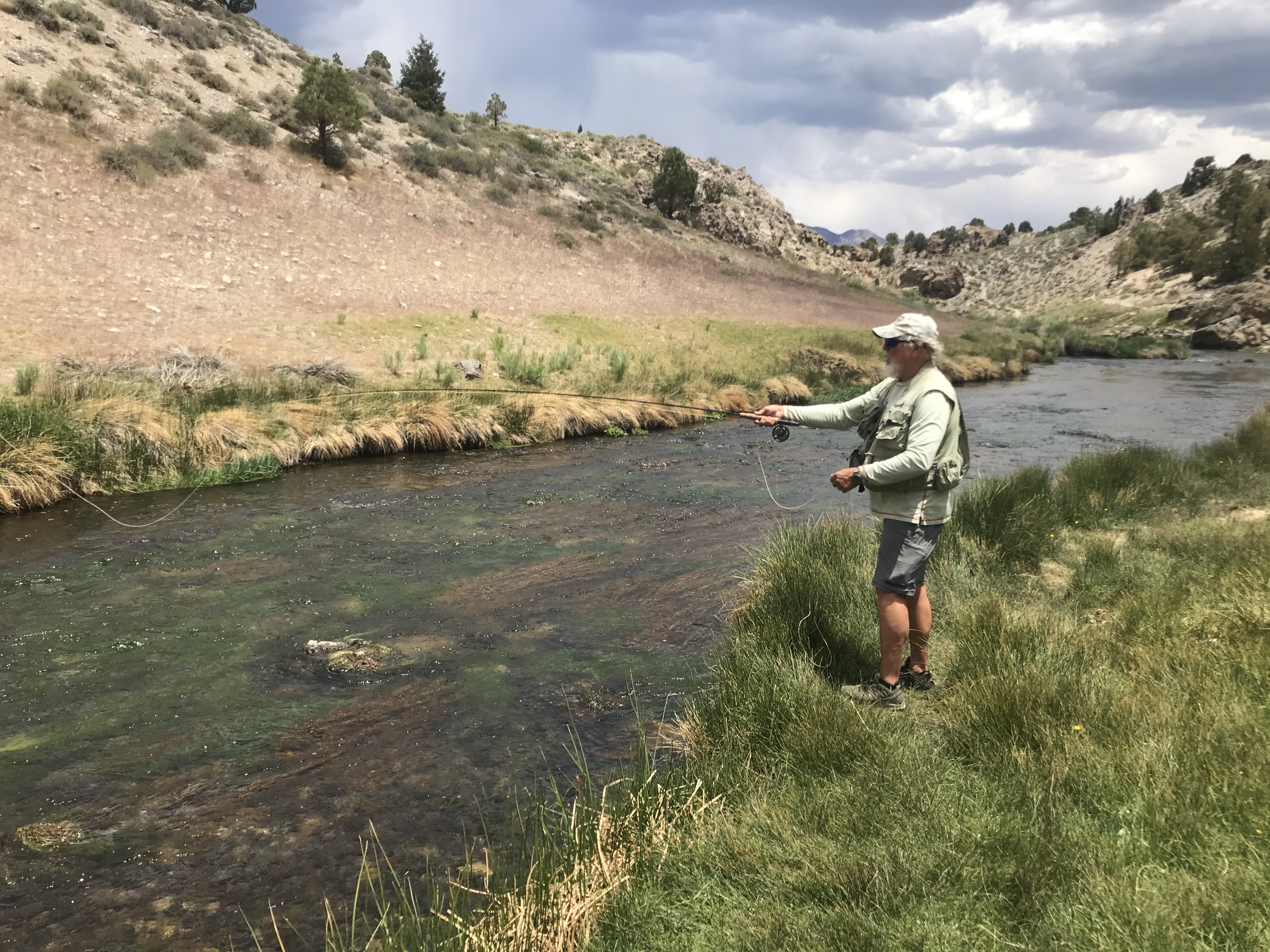We’re moving into summer this weekend and the weather has heated up. Was 105 in the Owens Valley this week. Hatches of mayflies, stone flies, and caddis have the fish feeding on the surface. Nymphing continues to be the most productive method in most waters. Crowley Lake is starting to produce consistent fly fishing for those midging the lake.
Lower Owens River Wild Trout Section:
There is little fly fishing pressure on the lower Owens River despite the flows back at 300 CFS. This the upper limit of safely wading the river. Fishing from the banks is limited to places where the tulles and willows have not invaded the banks. Gates one and two have the most bank accessible water in the wild trout section. Nymphing with lots of weight will produce fish for the nymphing fly fisher. Look for caddis on the water in the evenings.
At 300 CFS fishing the margins of the river is the way to get to the best drift for your flies.
Hot Creek:
Interpretive Site:
By 8:30 A.M. the trico hatch is well underway. The trout are taking the hatching duns and the spinners. Fishing is best once the spinners are on the water. The pale morning dun hatch starts around 10:00 A.M. During the pale morning dun hatch there is a caddis hatch. Fish pale morning dun parachute in size 16, trico parachute in size 20, and gray Kings River caddis or gray partridge caddis, gray parachute caddis, gray Hemingway caddis, and gray Henryville caddis in size 20.
Hatches of trico mayflies, pale morning duns, and gray caddis have kept fly fishers busy all morning.
Hot Creek Canyon Section:
A dry and dropper is a great set up to fish Hot Creek with the low flows in the creek right now. A size 16 pale morning dun with a size 18 bead head flash back pheasant tail nymph has been the productive setup. Mid-morning is a good time to switch out the nymph for a size 20 gray caddis adult imitation. Gray parachute caddis, gray elk hair caddis, and gray partridge caddis are fooling the trout. Pale morning duns have been hatching late morning and use a size 16 pale morning dun parachute.
Upper Owens River:
Above Benton Crossing Bridge:
Fly fisherman are targeting the resident and juvenile trout in the upper Owens River. The fish are feeding on trico mayflies first thing in the morning. Then they have a choice between pale morning duns and gray caddis. Nymphing is producing the most fish with size 18 bead head flash back pheasant tail nymphs, size 16 bead head flash back gold ribbed hare’s ears, size 12 stoner nymphs, and size 14 green gold wire Prince nymphs. Hopper nymphs continue to hop into the river offering the fish a calorie filled morsel. Fish size 16 or 18 parachute hoppers in tan.
Iris and a fly fishers just go together on the upper Owens River.
Owens River Gorge:
Summer temperatures in the low 100’s, rattle snakes, and stinging nettles are a good reason to leave the Owens River Gorge fly fishing alone until late September.
Bishop Creek Canal Behind the Ford Dealer:
Day time temperatures over the 100 degree mark makes for hot fishing during the middle of the day. The wild brown trout continue to feed on nymphs. If you’re looking for rising trout try fishing with size 16 elk hair caddis from 7:00 P.M. to dark. Euro nymphing with perdigons, stoners, rainbow warriors, and flash back gold ribbed hare’s ears are producing trout all day long.
Bishop Creek Canal is a great place to learn fly fishing techniques like Euro nymphing for the wild brown trout that inhabit the canal.
Backcountry lakes and springs represent a huge fishery with little fly fishing pressure. I recently spent a day on a small creek fly fishing for golden trout. What they lack in size they make up for in beauty.
A golden trout from a small creek in the Eastern Sierra.


















